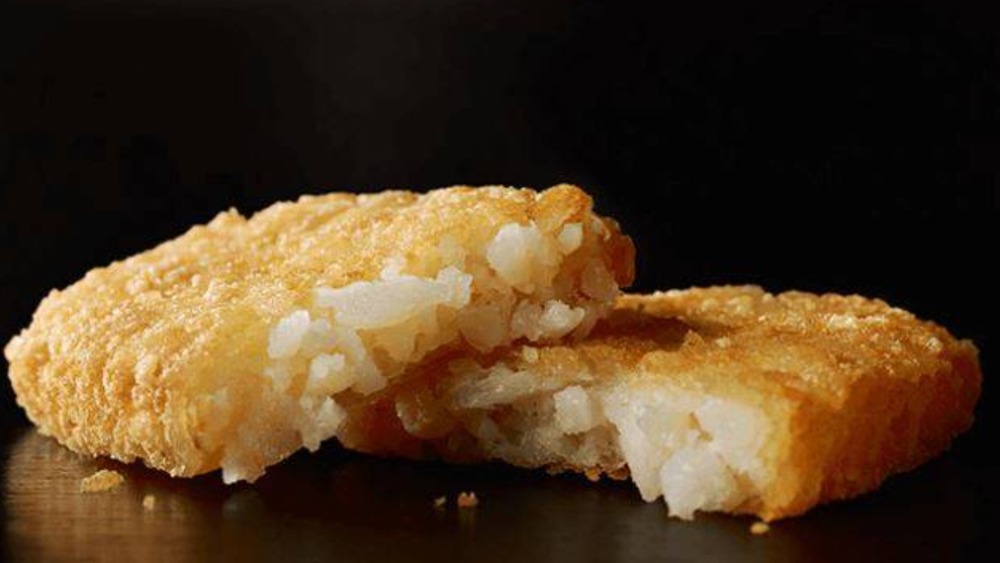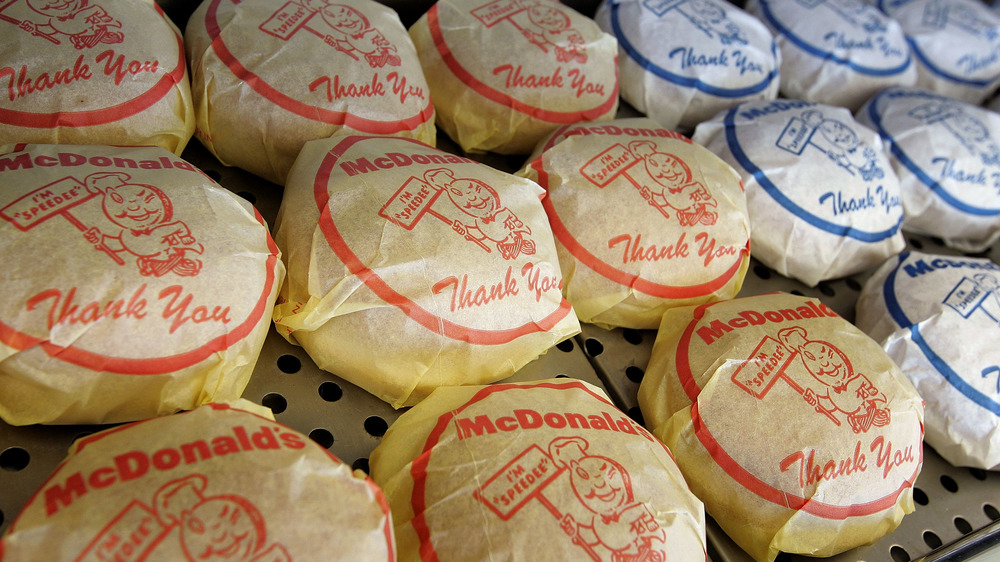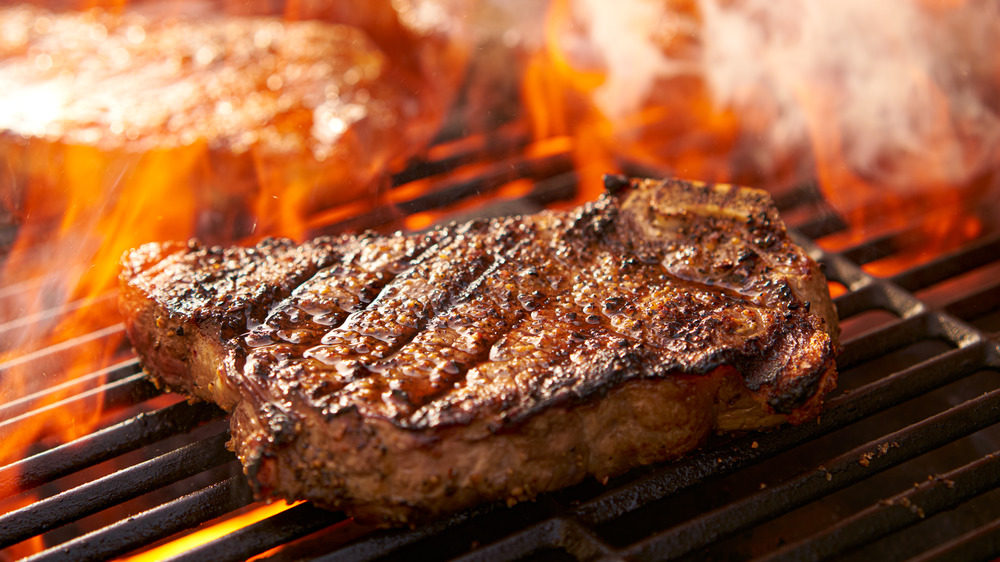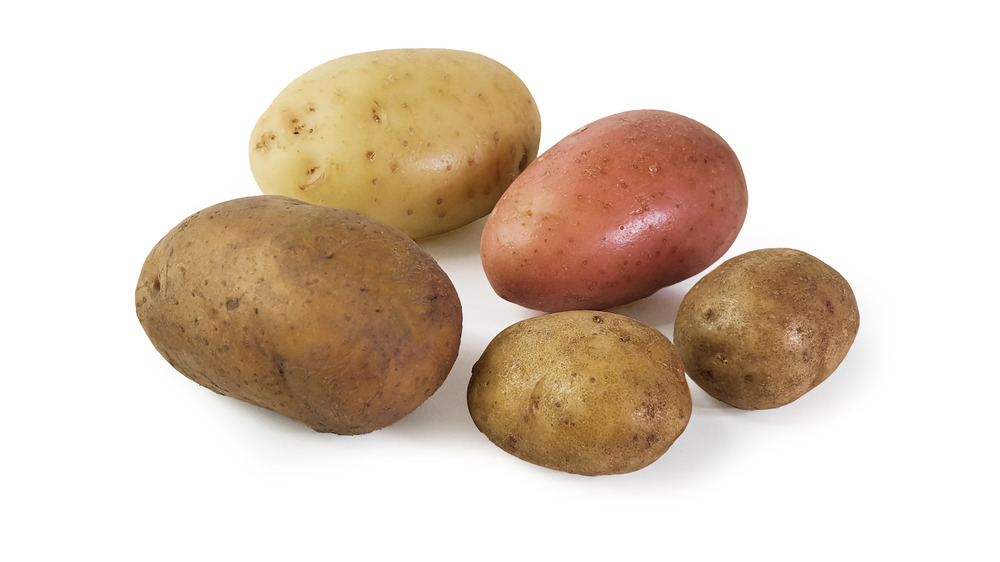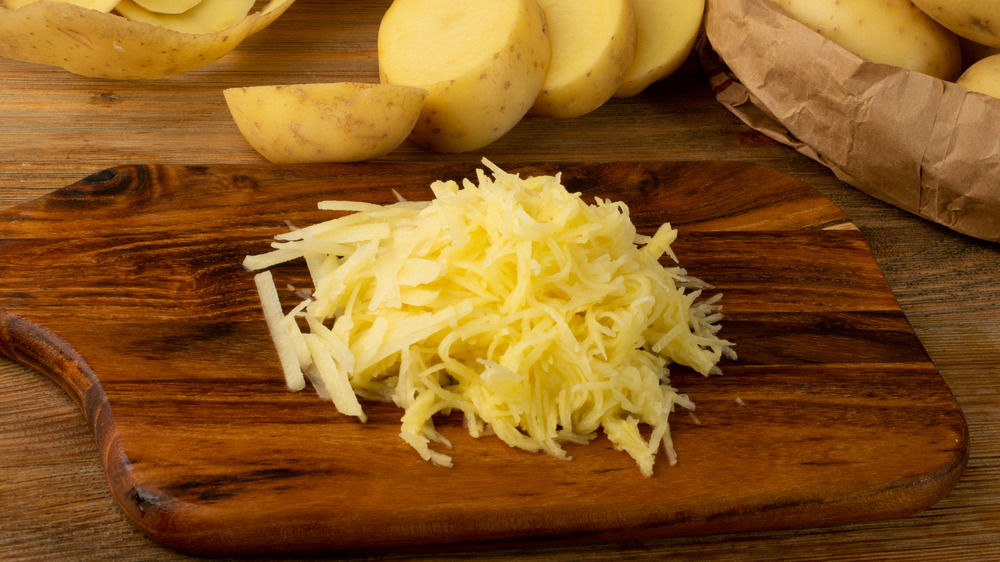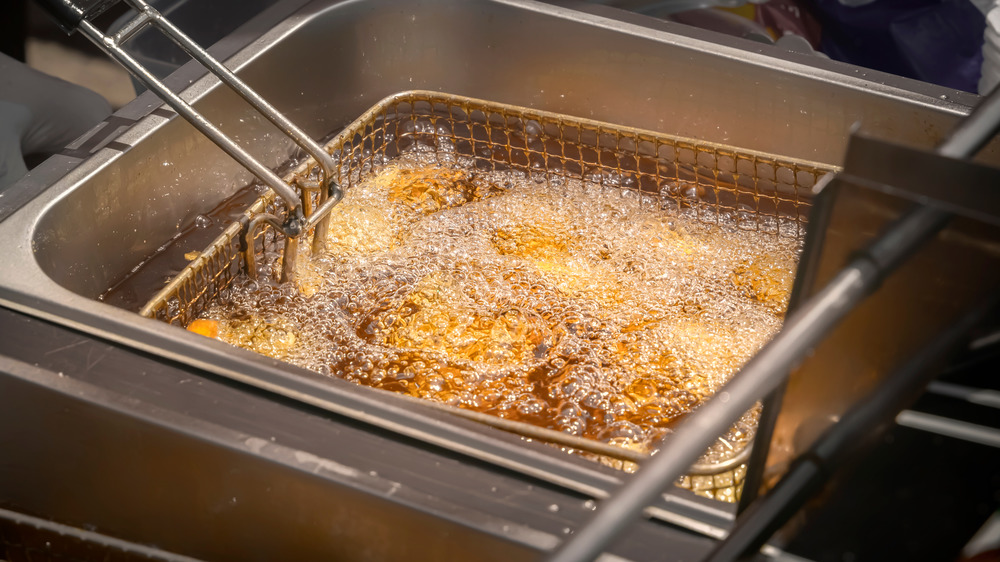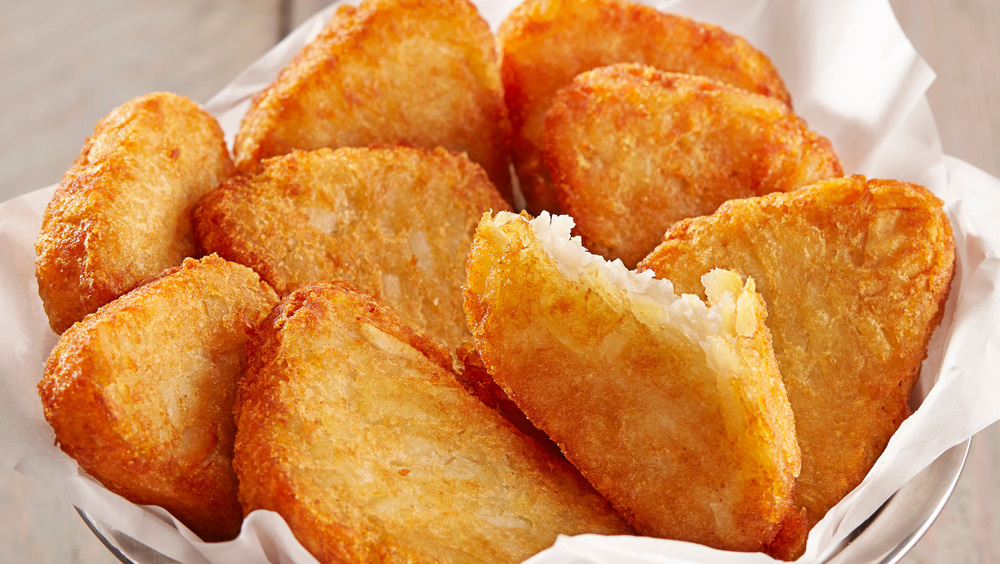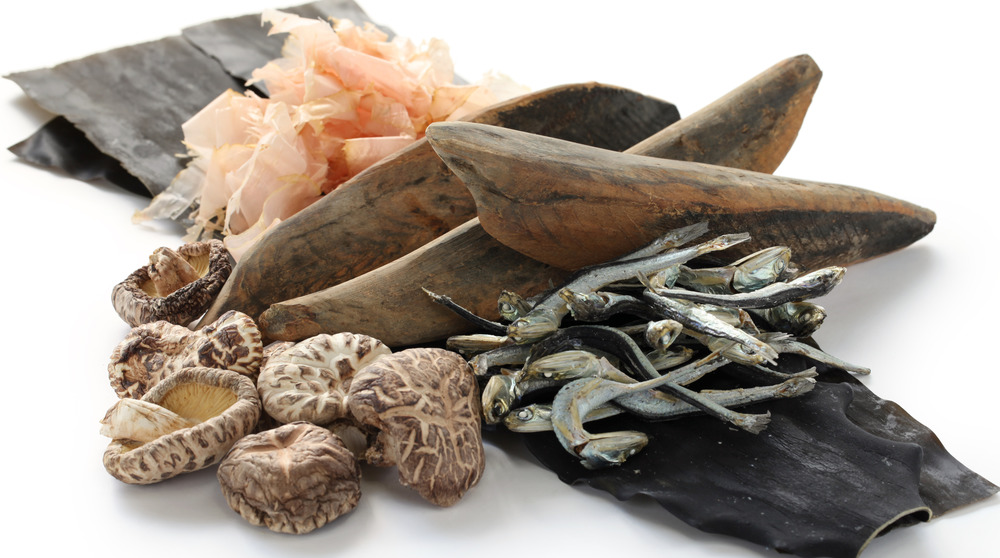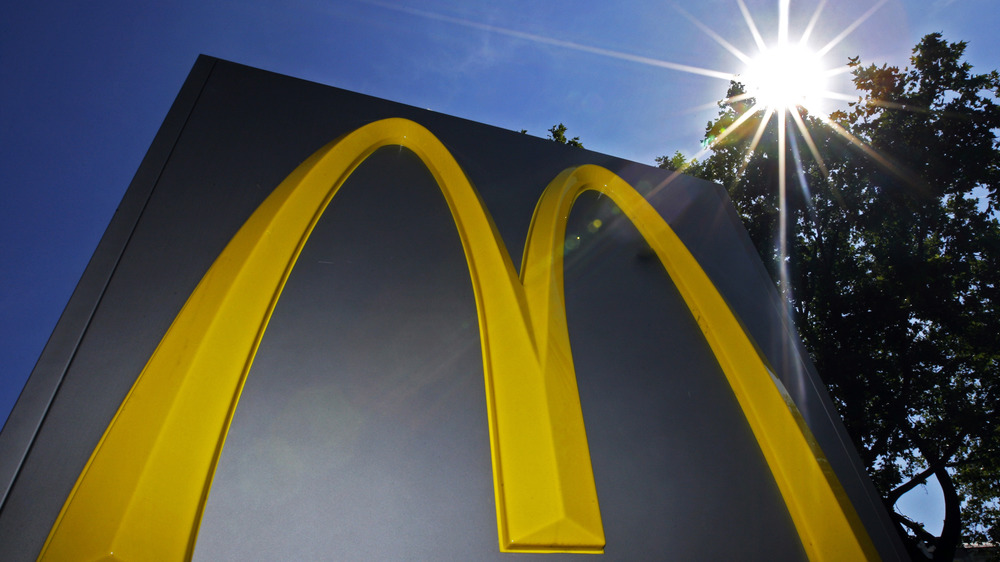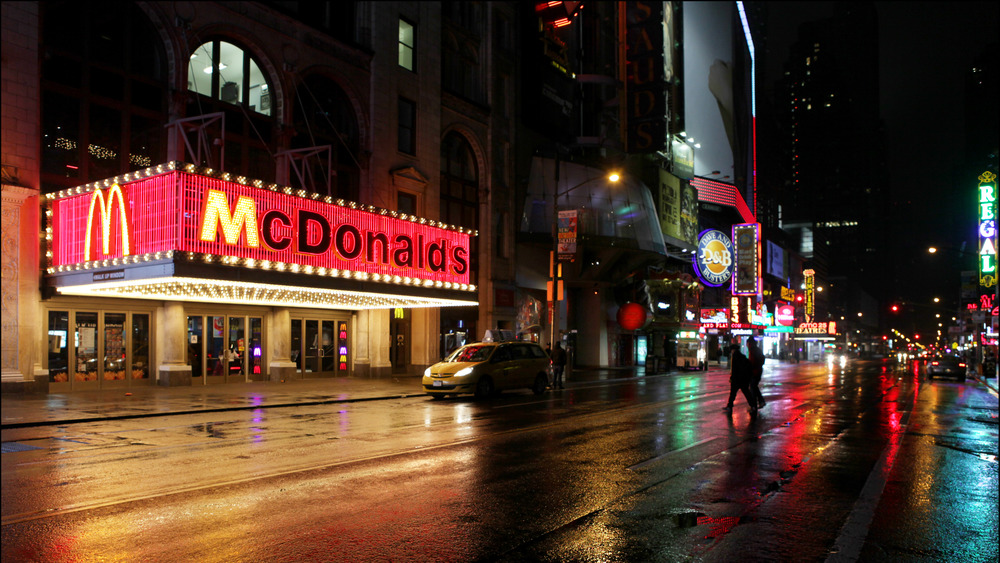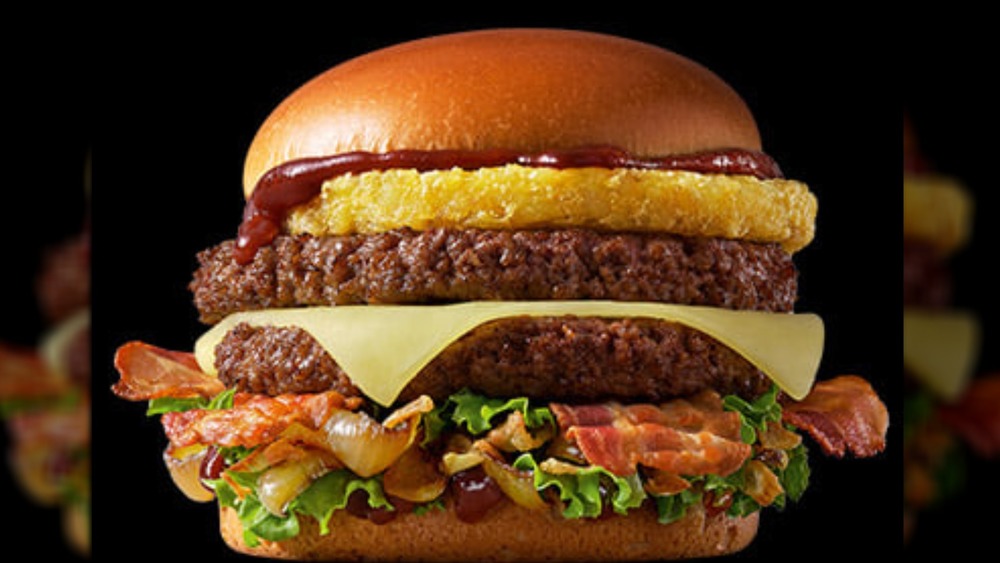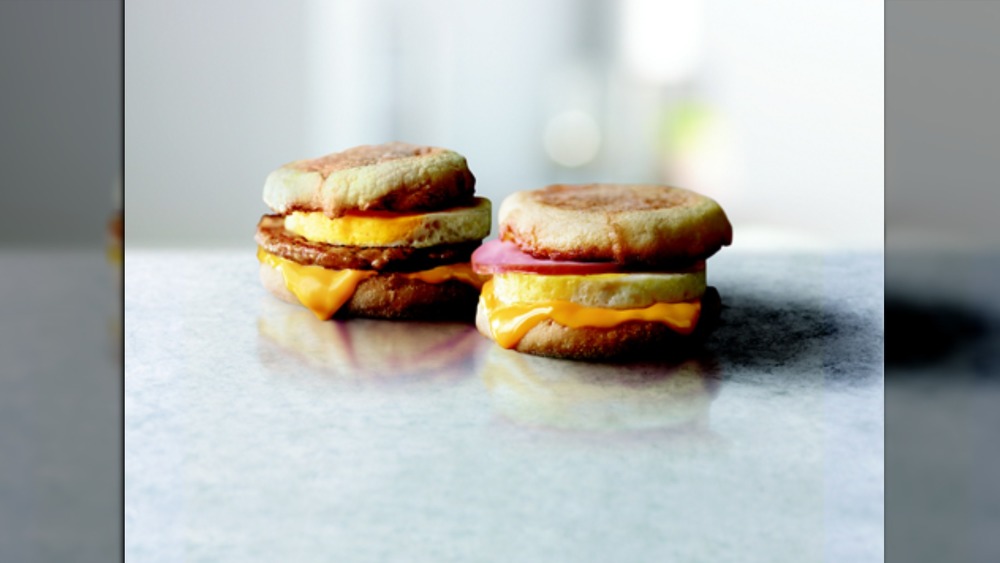This Is Why McDonald's Hash Browns Are So Delicious
We at Mashed have been known to wax poetic over McDonald's Hash Browns. Born in 1977, Mickey D hash browns are still one of the finest innovations ever to hit fast food. Made with eight ingredients that don't actually seem all that terrifying, considering some of the shady things we've learned about fast food restaurants in the past decade, these golden, oval-shaped morsels manage to be delightfully crispy on the outside yet improbably fluffy on the inside. At the same time, they offer a satisfying bite and a flavor that's unmistakably unique.
Not for nothing, McDonald's hash browns easily rose to the top of our definitive ranking of fast-food hash browns, where they have yet to be unseated. And that brings up something else we're known for around here, which is a tendency to obsess over what exactly makes the dishes and menu items that we like so incredibly likable. Take, for example, the time we got super-granular about why McDonald's breakfast sandwiches taste so good. Well, the time has now come for us to examine what it is that makes McDonald's hash browns so delicious.
McDonald's hash browns are one-of-a-kind for a reason
Sure, we were a bit surprised to learn that some of McDonald's menu items are made with obscure hard-to-pronounce ingredients. And maybe we were a tad disappointed that two such ingredients are in McDonald's hash browns. That said, we're not here to preach about chemicals in beloved foods — we would even say one of the rules of enjoying fast food is you don't think too much about what could be in your food.
But the fact is there is good reason you can't quite replicate the flavor of McDonald's hash browns with even the best copycat recipe. McDonald's has mastered the art of transforming the wholesome ingredients in their hash browns — potatoes, vegetable oil, salt, and corn flour – into next level greatness with the help of some chemical magic.
Firstly, McDonald's hash browns contain sodium acid pyrophosphate to prevent the potatoes from turning gray, as potatoes will do (via McDonald's). They also contain dextrose, a corn-based sugar that McDonald's uses during those times of year when the natural sugars in potatoes aren't capable of producing that golden color you've come to expect. Now, here's the good news: Neither amounts to a significant health concern, according to registered dietitian George Fear (via ABC), so you can most likely relax and enjoy your breakfast.
The totally unexpected ingredient in McDonald's hash browns that makes them so unique
There's another reason why your home-cooked hash browns fall short of capturing the flavor of McDonald's version, and it comes down to three words you probably wouldn't expect: natural beef flavor, with an emphasis on "flavor" and not actual beef.
McDonald's practice of adding subtle beefy notes to its fried potato products predated the invention of its hash browns by nearly two decades. Starting in the 1950s, McDonalds fried its potatoes in vegetable oil and beef tallow. But by the 1990s, concerns over tallow's saturated fat content led fast-food restaurants to stop frying with beef fat. Rather than forego the beef flavor altogether, McDonald's developed its own "natural beef flavor" and has been using it to flavor its vegetable oil ever since (via McDonald's).
You should know "natural" in the beef flavor refers not to beef but to wheat and milk. In fact, there is no actual beef in the natural beef flavor, which is made of hydrolyzed wheat and milk flavored. "Hydrolyzed" is a fancy way of saying the chemicals that make up a protein were separated into their smaller parts called amino acids, and in the case of the beef flavoring, the amino acids that can recreate a beef flavor are used in McDonald's hash browns.
McDonald's hash browns are made with up to seven different kinds of potatoes
Something else that makes McDonald's hash browns so delicious, not to mention unique, is that they're made from as many as seven different kinds of potatoes, according to the Idaho Potato Commission (IPC). These include a number of sub-varieties of the common Russet potato and a Canadian-grown potato known as the Shepody.
Each of the potato varieties McDonald's uses adds its own unique flavor and/or texture to McDonald's potato products. For example, the Burbank Russet has a distinctive earthy flavor, whereas the Ranger Russet offers lightness, crispness, and a golden color, and the Blazer Russet helps give McDonald's hash browns that nice, crispy crust along with that tender, fluffy interior, the IPC reports.
These different potato varieties are also harvested at different times of year, which probably minimizes the risk of a bad growth season or running out of a certain potato. For example, the Shepody is usually ready for harvest in August, according to the University of Nebraska Institute of Agriculture and Resources, whereas the Burbank Russet tends to be ready later in the year.
McDonald's hash browns go through a complicated prepping process
Ever wonder how McDonald's hash browns can be so toasty on the outside yet so fluffy and tender on the inside? As it turns out, it has a lot to do with how the potatoes are prepped for cooking.
Firstly, all potatoes supplied to McDonald's are inspected to ensure they meet strict criteria. Those that make the cut are washed and peeled using steam under pressure, and afterward they are once again inspected for blemishes. After all blemishes are removed, the potatoes are passed through a machine that slices them into strips. Those strips are then blanched in hot water (here's what blanching veggies is like at home).
After the strips are dried, they are sliced once again into the rice-like shreds you've come to expect in your McDonald's hash browns. Those shreds are then mixed with corn flour, dehydrated potatoes, salt, and pepper, and the resulting mixture is molded into an oval shape for frying (via McDonald's).
McDonald's has perfected it frying game
There's an art and a science to how fast food restaurants make their French fries crispy, and it also applies to McDonald's hash browns. Only after the potatoes go through an elaborate pre-cooking prep process — including two rounds of inspection, two rounds of slicing, and the forming of the sliced potatoes into the well-seasoned ovals we've come to associate with McDonald's hash browns — are they finally fried, and twice at that!
The first time McDonald's hash browns meet hot oil, it's known as "part-frying." Part-frying is basically blanching, except in oil as opposed to in water. Part-frying fries the hash browns only "part-ially," and in so doing, helps to remove water from the hash browns that might otherwise make the finished product soggy (via NPR), since during part-frying, moisture contained within the potato shreds rises to the surface.
After part-frying the hash browns are cooled, frozen, packed, and shipped to individual McDonald's restaurant locations (via McDonald's). The second fry, which occurs at individual locations, burns off any moisture that rose to the surface as a result of part-frying. The result is a crisp, crunchy shell wrapped around a tender, fluffy interior.
As humans we're programmed to crave crispy food, and McDonald's hash browns hit the spot
It's not your fault that you can't resist the siren song of a nice crispy McDonald's hash brown, since it's just a function of how humans have come to be "wired," according to John S. Allen, a research scientist at the University of Southern California (via NPR). In an All Things Considered episode, Allen explained that humans evolved from insect-eating primates. And if you've ever accidentally ingested a fly, then you might understand the connection between this and your favorite hash browns. If not, suffice it to say that insects tend to have a crispy bite.
As humans evolved further, they came to associate "crispiness" with "freshness," as in fresh, crispy vegetables and fruits. And as humans developed the ability to cook with fire, they discovered a whole new kind of "crispiness" — one facilitated by the Maillard reaction, in which high temperatures rearrange chemical bonds in foods to create that toasty, crispy flavor that continues to make human mouths water to this day.
Here's how to get your McDonald's hash brown extra crispy
As of 2021, we can't pretend we aren't well-versed in the art of ordering secret menu items from fast food restaurants, including McDonald's. But it was only in the last two years that the revelation that one can order their McDonald's hash browns cooked "well-done" finally began making its way around the internet. And for that, it appears we have Food Beast reporter Peter Phan to thank.
During his formative years, Phan worked in a McDonald's kitchen, where one of his favorite things to do during his breaks was...you guessed it, make himself a batch of well-done hash browns. "Like all well-done starches, all you would have to do is leave the shredded potato patties in the hot oil a few minutes past the wail of the fryer," wrote Phan in December 2018.
Although well-done McDonald's hash browns might look similar to the regular version (albeit a bit darker), they offer a crispier texture and a more "satisfying crunch," according to Phan. Nor will they turn soggy during your trip from the drive-through to your home. And this is not the only McDonald's breakfast menu hack that you should know about.
McDonald's hash browns have this kind of irresistible flavor profile
Another thing that makes McDonald's hash browns so delicious is that they're bursting with umami flavor. If you're not familiar with what "umami" means, here's the deal: You know how you were always taught that there are four basic "tastes" that humans can identify — sweet, salty, sour, and bitter? Well, it turns out there is actually a fifth, although the source of it wasn't identified until 1908.
That year, Japanese chemist Kikunae Ikeda decided to find a way to isolate the earthy, savory flavor associated with "dashi," a broth made from fish flakes and kelp. Ikeda evaporated dashi until all that was left were crystals of a substance known as glutamate. Ikeda called the flavor "umami," which is the Japanese word for "pleasant savory taste," and filed a patent for the evaporation process. Foods associated with the umami flavor are those in which glutamate is naturally present, including aged cheese, mushrooms, soy sauce, anchovies, potatoes, and beef, which as we learned earlier, is a big part of McDonald's fried potato history.
Given that McDonald's hash browns leverage both potatoes and beef, and given that humans have been found to crave umami flavor (sometimes to the point of an addictive response), is it any wonder there are times when it feels as if you need an order of McDonald's hash browns?
McDonald's hash browns make for the perfect hangover breakfast
Something you may not know about McDonald's hash browns is that they happen to go really well with a hangover. While we are not claiming that McDonald's hash browns can cure your hangover, we do offer the hypothesis that McDonald's hash browns can make a hangover seem much less unpleasant. Here's the logic: Alcohol-related hangovers, which are most commonly characterized by headache, nausea, fatigue, and clumsiness, have been observed to be made more severe by both a "lack of food consumption" and dehydration according to a study published in the journal Annals of Internal Medicine.
Obviously, McDonald's hash browns can quickly address a "lack of food consumption." Each serving of hash browns provides your body with 160 calories (via McDonald's), and you can probably scarf at least a serving (or two) in under five minutes. As for dehydration, a serving of McDonald's hash browns delivers 360 mg of salt (equal to 15 percent of the recommended daily allowance), which is an electrolyte your body may well be crying out for when you're dehydrated (via The Atlantic). Further, the eating of McDonald's hash browns is often associated with the drinking of beverages such as coffee water and juice, all of which have been linked to helping alleviate dehydration.
Ordering hash browns at night can feel deliciously illicit
It used to be that McDonald's breakfast items were available only until 10:30 a.m. However, in response to persistent prodding by breakfast-loving customers searching for at least a late-morning breakfast, McDonald's rolled out its all-day breakfast in 2015. But there are some things to consider before rushing out for your next fix of McDonald's hash browns.
While all-day breakfast is undoubtedly a customer-pleaser, it can feel burdensome to McDonald's employees. First, all-day breakfast forces french fries to share fryer real estate with hash browns, which can cause slowdowns in service, order mix-ups, and quality snafus such egg sandwiches that end up sitting around all day waiting to be purchased.
Moreover, all-day-breakfast has never really turned a profit, so when the novel coronavirus pandemic came along, it seemed as good an opportunity as any for McDonald's to suspend all-day breakfast until further notice. However, not all McDonald's locations actually suspended their all-day breakfast service, according to The Takeout, which reported in November 2020 that "rogue" locations continue to sell breakfast items all throughout the day (and night). How do you know which ones? All you have to do is ask. And that can make the experience of ordering nighttime hash browns feel deliciously naughty or daring or even illicit — kind of like whispering the password at a hidden speakeasy — go ahead, we dare you.
Hash browns also are the king of toppings for your burger
If you were someone who made use of McDonald's all-day breakfast when it was still everywhere, then maybe you already know this. But for the uninitiated, it's might be time to discover that McDonald's hash browns are not just a delicious breakfast food — they're also the perfect condiment for just about any McDonald's sandwich.
All you have to do — assuming you have a nearby McDonald's that is willing to sell hash browns after the breakfast shift is over (via The Takeout), is take the top off your sandwich, place a hash brown on the sandwich ingredients, and enjoy.
Full disclosure, we didn't think of this first. McDonald's actually did. Back in 2016, the fast-food giant rolled out the Potato Rosti Burger in Canada (via Thrillist). The Potato Rosti Burger is basically the hack we just described, except it also has bacon, which is also available wherever and whenever McDonald's breakfasts are sold. McDonald's Bulgaria also launched an impressive line of Potato Rosti sandwiches in 2018 (via Twitter).
McDonald's hash browns with an Egg McMuffin are a complete breakfast
McDonald's hash browns are to Egg McMuffins what French fries are to hamburgers: a perfect pairing. But that probably didn't happen just by chance. By the time McDonald's came up with its hash browns concept in 1977, it had already been selling its Egg McMuffin sandwich for two years (via CNN). After the success of the Egg McMuffin, it seemed only natural that the chain expand its breakfast menu.
And the hash brown and Egg McMuffin are truly a perfect pair, and there's a way you can test that theory. And we're not talking about ordering an Egg McMuffin with a side of hash browns and contemplating how the flavors and textures perfectly compliment another. What we're talking about is a McDonald's breakfast menu hack known as "Menu Remix #82." Menu Remix 82 means ordering an Egg McMuffin sandwich and an order of hash browns, taking the top off the McMuffin, placing the hash brown patty inside, and then placing the English muffin top back on before digging in. If that's not clear enough, no worries: McDonald's has made a 15-second video that carefully outlines the process.
